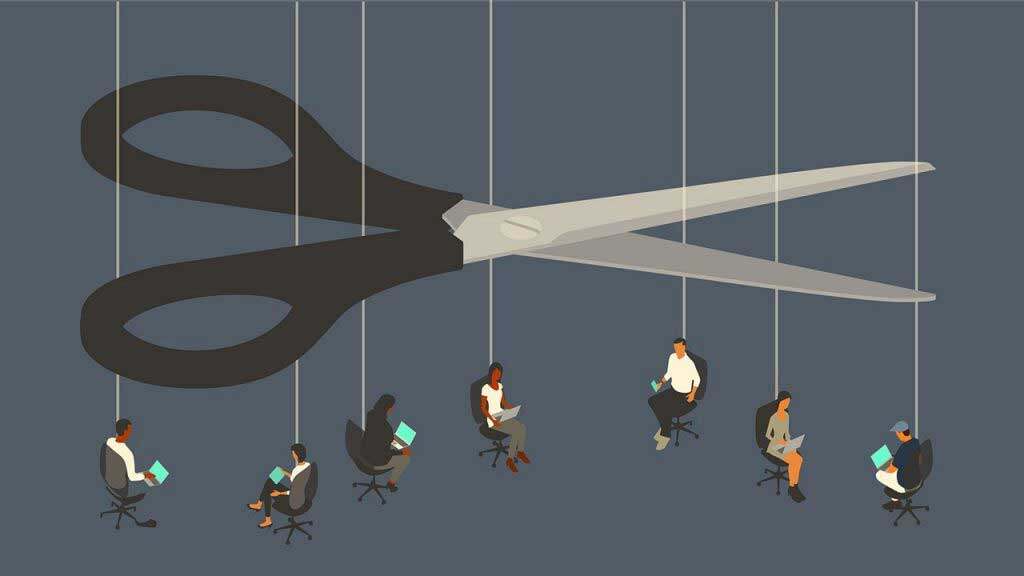Experimental economist Ananish Chaudhuri says that contrary to what you might think, cutting pay won’t reduce worker productivity.


Opinion: Recent survey findings indicate that firms struggling in a recession and looking to reduce costs should consider cutting pay rather than laying people off.
The survey ‘Fair Enough’ by market research firm Talbot Mills, found that 67 percent of the more than 1000 respondents thought redundancies in a recession were unfair.
Meanwhile, 47 percent of those surveyed supported cutting wages by 10 percent but retaining all staff as opposed to cutting the workforce by 10 percent, which had 22 percent backing.
This is the opposite of what typically happens in recessions, where companies prefer to lay off workers rather than implement across-the-board pay cuts.
This reluctance to cut pay comes primarily from management rather than workers, according to Truman Bewley, a Yale economist, who notes that it stems from several factors including the fear of losing the most productive workers as well as reducing worker morale. Current pay acts as a reference point, and cuts are resented by workers who may well retaliate by slacking on the job.
The thinking is that, when businesses lay off workers, it’s painful but the pain is short-lived. Once the laid off are out of the door, the rest go back to work as before. Meanwhile, pay cuts affect everybody; they hurt morale and, if bad feelings linger, this can have a severely detrimental impact on worker productivity.
This view, however, ignores the fact that layoffs need to be perceived as being fair and, if considered unfair, they may generate negative feelings and disloyalty among remaining workers.
Those who remain may also worry about future layoffs, and these dismissals could have implications for workload with everyone left sharing more of it. Layoffs can also lead to lasting bitterness among remaining workers who came to care for the workers who are let go.


But how do pay cuts and layoffs affect worker morale and productivity?
My co-authors and I attempted to answer this question using a simple lab experiment with nearly 300 participants.
Participants took part in a game designed to simulate coordination problems that can occur in any industry engaging in assembly line production. In all of the simulations, a group of workers have to work together to generate an output. They can all work ‘hard’ generating a high level of output or they can work ‘slowly’ resulting in lower output. In our simulations, we allow for different levels of effort ranging from high to low. If everyone puts in a high level of effort, everyone (including the firm) makes more money. If everyone puts in low effort, then everyone makes less.
Participants are put into groups of five and play the simulated game for 10 rounds. Following this, we tell them that there is a recession and that management has decided to implement changes.
In one game, management’s intervention takes the form of a pay cut, where participants play another 10 rounds. Except, in this second half, they only earn 80 percent of what they were earning before, implying a 20 percent pay cut.


For layoffs, we used different approaches. In one case, following the first ten rounds, we tell the participants the employer has decided to lay off five workers, who chose the lowest effort level in round ten among all the participants. These five participants collect their earnings in cash and are asked to leave the lab.
In another treatment, at the end of the first ten rounds, as opposed to the worst performers among all the participants, here the worst performer from each of the four groups is laid off.
Behaviour in these experiments is compared with a baseline with no such pay cuts or layoffs.
We thought that pay cuts would result in less workplace coordination while layoffs wouldn’t, and that the effort put in by the workers following the pay cut would be lower than before.
However, we found that our hypothesis about pay cuts was incorrect. We found that the amount of effort exerted by workers following a pay cut is no less than that after layoffs, implying that pay cuts did not reduce worker productivity. Meanwhile, both layoffs and pay cuts resulted in greater coordination success.
It appears that, when it comes to pay cuts, there are, at least, two factors at work. First, there is the possibility that pay cuts reduce morale. But second, a pay cut is also an intervention that reinforces the idea, in participants’ minds, that payoff is maximised by choosing higher effort. In the context of this game, the role of a pay cut as a signal to improve productivity outweighs any potential morale-reducing impact.
It’s also possible that the relative success of the layoffs in our study arises from the fact that the layoffs were perceived as being fair since the least productive worker was being let go. Identifying the least-productive worker may be more difficult in actual workplaces and we know that the perceived fairness of an action is critically important to the success of an intervention or lack thereof.






































